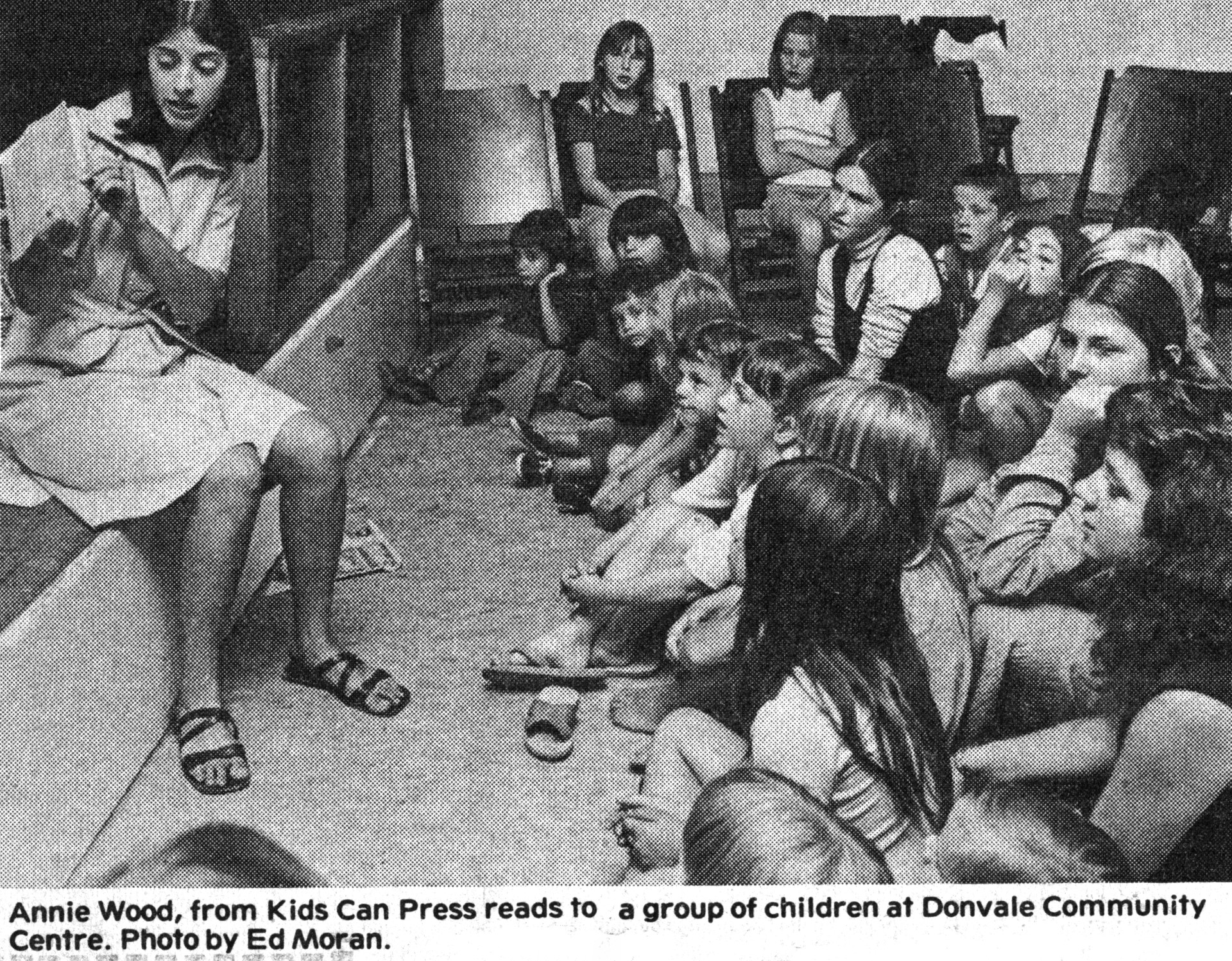Little did Annie (Ouroumis) Wood know that the six-month job she applied for at a small new publishing company would evolve into a multifaceted, productive career spanning four decades. She had just graduated from the Ontario College of Art (now OCAD U) in Textile Arts when she landed the job in 1974.
The company was Kids Can Press (KCP), and Wood went on to play a significant role in the evolution of the company, which became Canada’s leading children’s book publishing house. The company was founded by a small collective out of the Ontario College of Art (OCA).
In the company’s early days, Wood co-authored The Sandwich, with fellow OCA grad Ian Wallace, which was shortlisted for the City of Toronto Book Awards.
The book, about a boy from a working-class Italian family who is confronted with cultural bias in a Toronto classroom, helped catapult KCP into the public eye and became the company’s first bestseller.
Since then, Wood has published dozens of children's books that have contributed to a richer understanding of the Canadian mosaic.
After leaving KCP, Wood founded Circle Media, a company that offers creative solutions for museum content delivery, providing services such as exhibition design, interpretive planning, and curating. The company has worked with leading cultural institutions in Canada and Asia.
Wood is also the founder of the “Inventive Women” and Inventive Kids websites/blogs and is the author of Canadian Women Invent! a children’s book that presents the story of Canadian female ingenuity through invention and innovation.
Canadian Women Invent! was awarded an “Our Choice” designation by the Canadian Children’s Book Centre.
Currently, Wood is writing an adventure series for middle grade readers, as well as an anecdotal history of the Canadian children’s publishing industry.
Q&A WITH ANNIE WOOD
What themes are central to your creative and professional work, as an author, curator, designer and educator?
There are several themes that run through my creative work. The primary one is inclusive history. I am very curious about the side stories and the untold stories of events, and of people, and how the omission of these stories dramatically alters our perception. I also explore the theme of identity – how it’s shaped and maintained in the face of ongoing change.
What influenced the evolution of these themes in your work?
I have always cared deeply about the plight of people who are on the outside. Much of my creative work has been about providing a platform for their untold stories.
I am attracted to projects that help to lift people up, that bring people together, that offer a different perspective, and that celebrate the uniqueness of something once forgotten or hidden.
As a Macedonian immigrant I struggled with finding my voice in a new country. I know what it feels like to be silenced for who you are.
What were some of the challenges in the early days of Kids Can Press?
Imagine 12 people sitting on a basement cement floor holding their first meeting of the Kids Can Press collective. Our task was to pair up, and to come up with six story book ideas, and to write and illustrate the stories. That was the easy part. Next, we had to learn how to set type, print, collate, and bind the books. We did this at Coach House Press. And once printed, we needed to find bookstores that would take them.
At the time children’s book publishing in Canada was almost non-existent. Almost all books were from the United States or England. These books did not reflect the experiences of Canadian children. Our books did.
It was tough. We carried our books in cardboard boxes from one store to another, hoping we could persuade the buyer to give us some shelf space.
Our thin, little two-colour books paled in comparison to the flashy American and British children’s books. One bookstore at a time took a small handful of books. We gave book readings in school and libraries. We sent books out to reviewers in the media. And submitted our books to the City of Toronto Book Awards. The Sandwich, the book I co-authored with Ian Wallace, was shortlisted, and that brought a lot of attention to Kids Can Press.
How did your education at the Ontario College of Art influence your career?
OCA gave me the confidence to come up with an idea, no matter how seemingly crazy, and to run with it. This has been constant through my work life and has enabled me to develop projects that I believe have made an impact on society. Kids Can Press was my launching pad.
Lucky me to have gone to OCA at a time when the school itself was undergoing a huge change under the leadership of Roy Ascott. The innovation was heady.
We were encouraged to think in ways we never imagined. Of course, all the regular courses were still offered but alongside those we could stay up all night with the futurist Frank Ogden to see the sun rise. Experiment with unconventional materials. Participate in a survival experiment on Andros Island.
I majored in Textile Arts, and while I loved working with fibre and at the time imagined myself as a sculptor, it’s not what I did after graduation.
What advice would you offer to aspiring artists/writers?
One thing that comes to mind is to pay attention to the zeitgeist of the day.
Often a creative project is successful when it speaks to what’s going on in the lived lives of people.
This sweet spot of interconnectivity has its own energy that brings awareness to the project. It’s what will make a reviewer take notice of an exhibition, or a publisher take a chance on a manuscript.

Photo courtesy: Kids Can Press

Photo courtesy: Toronto Sun, 1975.



